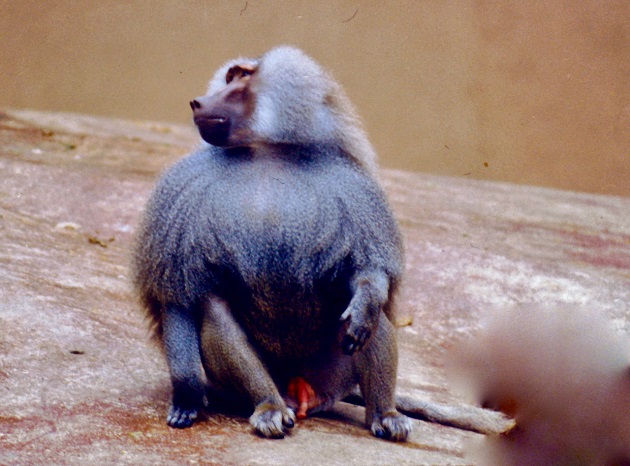The ancient Egyptians tamed them and trained them to collect fruit from the tallest trees, like palms, and even to look after flocks of sheep, just as certain breeds of dog are trained to do nowadays.
 Photo: Antonio Cruz.
Photo: Antonio Cruz.
But desert creatures will lie there,
jackals will fill her houses;
there the owls will dwell,
and there the wild goats will leap about.
Isaiah 13:21
Some versions of the Bible translate these verses from Isaiah (13:21 and 34:14) to include the word “satyrs” while others refer to “hairy creatures”, and also as “hairy goats”, “wild goats” or “mountain goats”. Some even go so far as to say that these “satyrs” were demons in the form of goats which would meet in desert spaces to hold covens.
This reflects the difficulty translators had in grasping the original Hebrew concept. However, other authors believe that this could refer to the baboon or hairy monkey, which in ancient times inhabited the Biblical regions as far as the Euphrates, and used to frequent derelict human constructions.
Generally speaking, these monkeys had a face rather similar to that of the dog, and quite long hair, especially in the case of adult males. There are several different species of primates, but the sacred baboons (Papio hamadryas) were the most important in ancient Egypt. They are old-world primates (that is to say they have a very narrow nasal septum and a non-prehensile tail) which belonged to the Cercopithecidae family.
The males are much larger than the females (sexual dimorphism) and possess impressive looking fangs which they use in fights, and to defend their tribe. The hair on their head and shoulders makes them seem more corpulent and formidable than they really are. They have longer hair than other baboon species, which in the case of the male is greyish, while in the female it is brown. Their face, hands and hips are usually bright red.
Now they live in desert areas, savannahs and the rocky regions of Egypt, Sudan, Eritrea, Ethiopia and Somalia. There are also small populations in the Arab peninsula, near the coasts of the Red Sea.
The ancient Egyptians tamed them and trained them to collect fruit from the tallest trees, like palms, and even to look after flocks of sheep, just as certain breeds of dog are trained to do nowadays.
The relationship between the ancient Egyptians and these monkeys was so close that they actually worshiped them as if they were gods. The Egyptian god Thot took on the form of a lesser local god called Babi, who had the appearance of a baboon, which is actually the origin of the term baboon. Needless to say, the monotheistic Israelites despised the polytheism of the Egyptians and their habit of divinising animals.
Isaiah 13:21 is referring to the final destruction of Babylon. It predicts that Babylon will be destroyed as completely as Sodom and Gomorrah were. And indeed this prophecy was fulfilled, albeit gradually. It the time of the emperor Hadrian (76-138 AD) only the walls remained around which only vermin and desert creatures remained alive.

Las opiniones vertidas por nuestros colaboradores se realizan a nivel personal, pudiendo coincidir o no con la postura de la dirección de Protestante Digital.
Si quieres comentar o